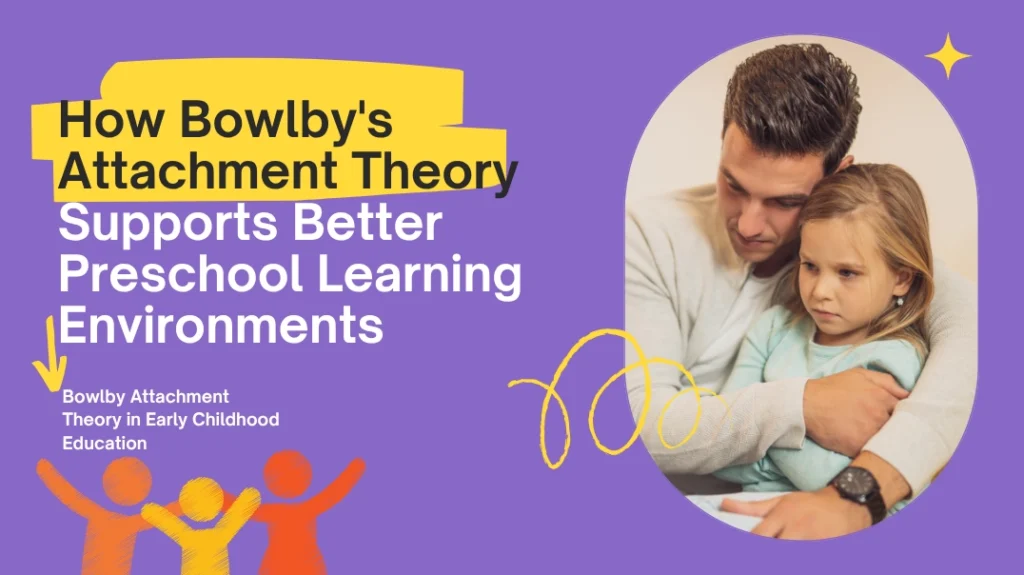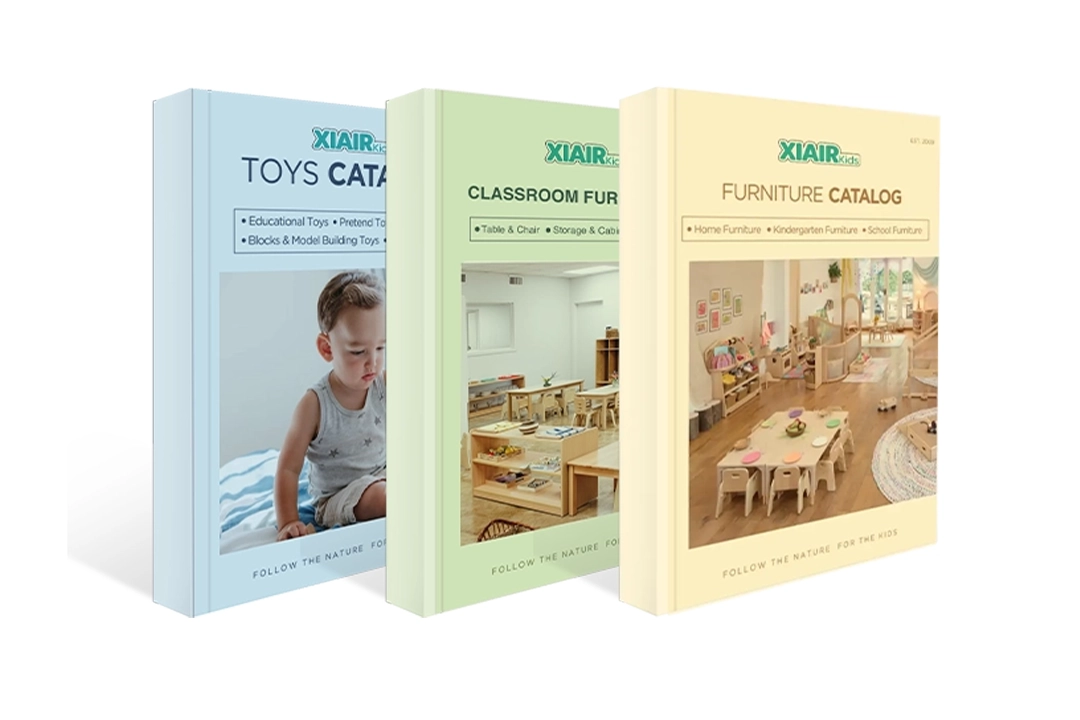Every day, preschool teachers and school owners face the same invisible challenge: Why do some children in the classroom show confidence and curiosity, while others seem anxious, clingy, or withdrawn? The answer isn’t just about curriculum or teacher training—it’s deeply rooted in something called the Bowlby attachment theory.
Many educators feel frustrated when a child struggles to settle into a new environment or fails to connect with their peers. The classroom might be full of high-quality toys and books, but the real source of a child’s sense of security—or their anxiety—often comes from the earliest relationships and the way their learning spaces make them feel. If these needs aren’t addressed, children may carry emotional uncertainty that affects their development for years to come.
The good news is that understanding the Bowlby attachment theory gives us a powerful tool to shape not only the emotional climate but also the physical setup of every preschool and kindergarten. By building preschool environments and choosing furniture that reflects the insights of John Bowlby’s attachment theory and its many practical applications, we can help every child feel safe, connected, and ready to explore. This article will guide you step-by-step through the key ideas of Bowlby’s attachment theory, why it matters for young children, and—most importantly—how it can be put into action in your own classroom design and furniture choices.
Giới thiệu
Bowlby’s attachment theory has changed the way the world thinks about child development, education, and even furniture design in preschools. From the first day a child steps into a classroom, the environment they walk into can either support or undermine their sense of safety and trust. This is not just a theory for textbooks—Bowlby attachment theory shapes real decisions every day, from the layout of group tables to the comfort of reading corners and even the materials used in nap spaces.
In this comprehensive guide, we will explore the whole journey of Bowlby’s attachment theory: its origins, main ideas, the critical stages of attachment, the many types and styles of attachment, and the practical differences between Bowlby and Ainsworth’s perspectives. You’ll also discover how factors like classroom routines, caregiver consistency, and the design of learning environments directly affect attachment in early childhood. We’ll break down how the right furniture, safe zones, and cozy corners play a significant role in building secure attachment in preschool children.
Whether you are a preschool owner, an early childhood educator, or a parent curious about the impact of Bowlby’s attachment theory on everyday learning, this article will give you hands-on insights and solutions. We’ll connect the dots between academic research and practical, child-friendly preschool furniture—so you can help children grow with confidence, comfort, and strong relationships right from the start.
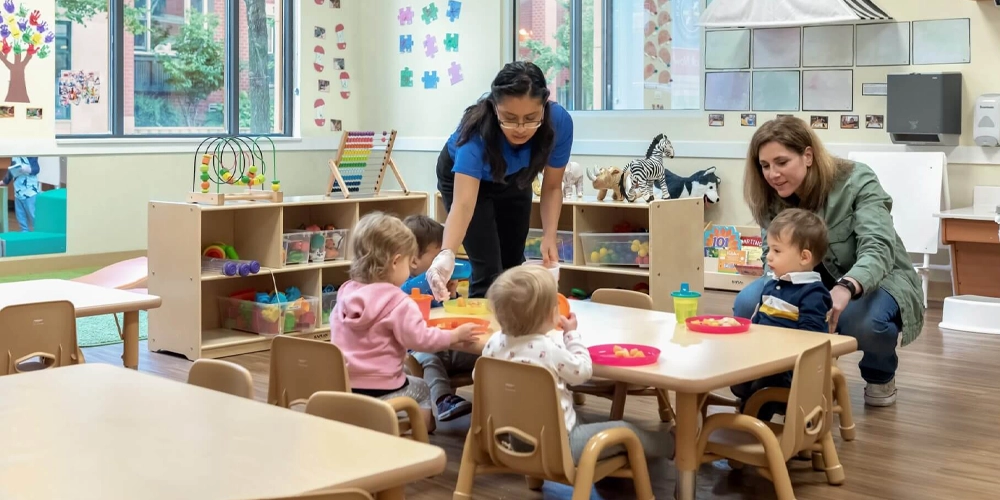
What is Bowlby’s Attachment Theory?
Before diving deeper into the practical impact of Bowlby’s attachment theory, it’s helpful to start with a clear and straightforward definition. Understanding exactly what this theory means sets the foundation for everything that follows.
Bowlby Attachment Theory Definition
Bowlby’s attachment theory is a widely recognized concept in psychology and education. The definition of attachment theory, according to Bowlby, is simple: it is a framework explaining how children form strong emotional bonds with their caregivers, which impacts their development for life. According to John Bowlby’s attachment theory, the quality of these early attachments influences a child’s sense of security, ability to explore, and social skills.
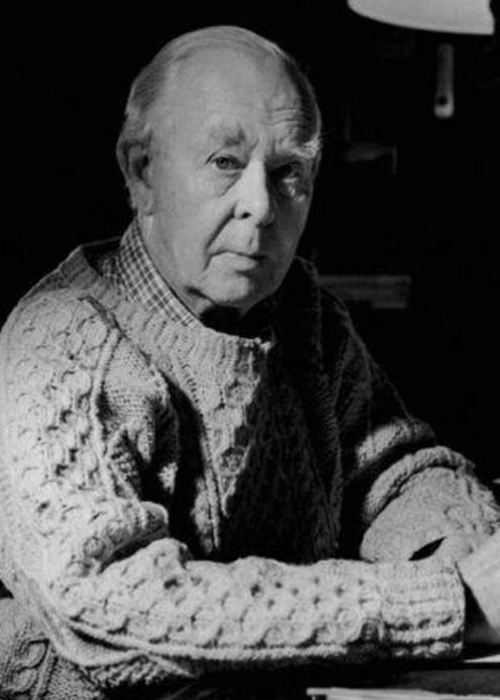
Who is John Bowlby?
John Bowlby (1907-1990) was a leading British psychologist and psychoanalyst. His research on child-parent separation and emotional development created the foundation for what we call Bowlby’s attachment theory. Bowlby believed that a secure, loving bond with a caregiver is not a luxury for children—it is a basic human need. Because of John Bowlby’s attachment theory, preschool teachers, school leaders, and even furniture designers now pay close attention to what makes a child feel safe, comfortable, and ready to learn.
Why is Bowlby’s Attachment Theory Important in Early Education?
The importance of Bowlby’s attachment theory in preschool environments cannot be overstated. When a child has a secure attachment, they feel confident to try new activities, join in group play, and build relationships with teachers and friends. On the other hand, children who do not experience this sense of safety may struggle with anxiety or behavior challenges in the classroom.
This is why so many preschool programs, classroom designs, and even furniture solutions are guided by the insights of Bowlby’s attachment theory. The theory’s practical impact is clear: it helps answer critical questions about what makes an environment nurturing, how to support children during transitions, and why details like cozy corners or consistent teacher presence matter so much.
Bowlby Attachment Theory in Practice
For anyone designing or running a preschool, applying Bowlby attachment theory means more than just following trends. It requires a deep look at every classroom detail—from table heights and nap areas to how children enter and leave each day. Every choice should answer: Does this make children feel safe, valued, and connected?
By keeping the focus on secure attachment, schools and furniture suppliers can create truly supportive environments. This benefits not only individual children but also helps build positive, lasting relationships among teachers, families, and peers.
Bowlby Attachment Theory: History and Development
The journey of Bowlby’s attachment theory stretches back to a time when the emotional lives of young children were often misunderstood. Today, understanding this history is the first step to seeing why Bowlby’s attachment theory remains so important in early childhood education and preschool design.
Origins of Bowlby’s Attachment Theory
Long before the phrase “Bowlby attachment theory” became a household term, people believed that young children would outgrow their need for closeness or comfort. Emotional bonds between infants and caregivers were not taken seriously in early psychology. However, John Bowlby, drawing on both scientific observation and his experience as a therapist, began to question these old views.
Bowlby observed children who were separated from their parents due to illness, hospitalization, or even the tragedies of war. He noticed that these children often struggled with depression, anxiety, and difficulty forming new relationships later in life. These patterns could not be explained by old theories alone. Over time, Bowlby’s work gained attention, and his theory of attachment started to shift the conversation from discipline and independence to the lasting effects of love, comfort, and safety.
With these insights in hand, Bowlby set out to formalize his findings and provide a clear framework for others to follow.
John Bowlby’s Work and Influences
John Bowlby’s groundbreaking research laid the foundation for modern attachment theory. His early papers, including “The Nature of the Child’s Tie to His Mother” (1958), and his collaboration with Mary Ainsworth, helped shape what we now call the Bowlby and Ainsworth attachment theory. Bowlby argued that attachment behaviors—such as crying, clinging, or searching for comfort—were not learned, but somewhat innate. These behaviors were part of a child’s evolutionary survival toolkit.
During the 1950s and 1960s, Bowlby’s ideas stood out because he combined biology, psychology, and direct observation in ways few had done before. He challenged Freud’s views on childhood by showing that early attachment, not just unconscious drives, shapes development. His collaborations led to the publication of multiple works, which today can be found referenced in nearly every child psychology book and even in Bowlby’s attachment theory citation lists for academic research.
Yet, the actual turning point came when Bowlby published his most influential book, making his ideas accessible to educators, parents, and scientists around the world.tal process. His next step was to describe exactly how these attachments form and change over time.
Milestones: Bowlby Attachment Theory 1969 and Beyond
The year 1969 is forever linked to Bowlby’s attachment theory 1969, when John Bowlby released the first volume of his trilogy, “Attachment and Loss.” This book explained the stages of attachment, introduced the “secure base” concept, and described how early bonds with caregivers affect every aspect of life. This publication is often cited in research as the original Bowlby attachment theory book and is still referenced by teachers and child psychologists seeking practical guidance.
In the 1970s and 1980s, further work—including “Separation: Anxiety and Anger” (1973) and “Loss: Sadness and Depression” (1980)—expanded the theory. These books explored the impact of disrupted attachments and became key texts for anyone looking for a summary of Bowlby’s attachment theory or a full explanation of Bowlby’s attachment theory.
Mary Ainsworth, Bowlby’s close collaborator, added new dimensions through her strange situation experiment. By systematically observing how infants responded to brief separations and reunions with their caregivers, she was able to define attachment theory types and styles, such as secure, avoidant, ambivalent, and disorganized. Her research, often published alongside Bowlby’s, further cemented Bowlby and Ainsworth’s attachment theory as the gold standard in developmental psychology.
Now, decades later, the Bowlby attachment theory is embedded in education, mental health, and even the design of early childhood environments. To fully appreciate its practical value, it’s essential to look at the stages and phases of attachment—how these bonds are formed and what they mean for children in preschool settings.
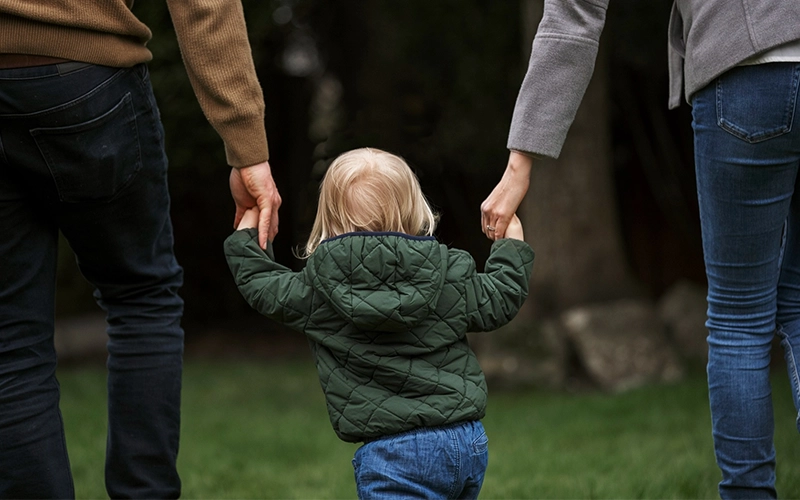
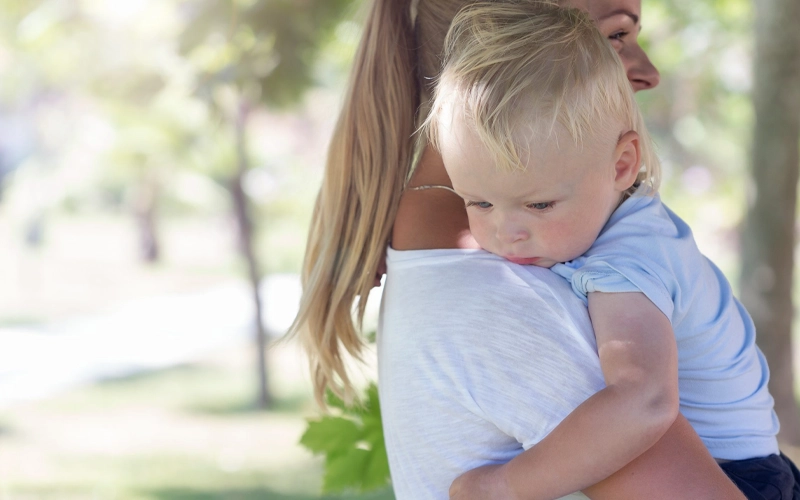
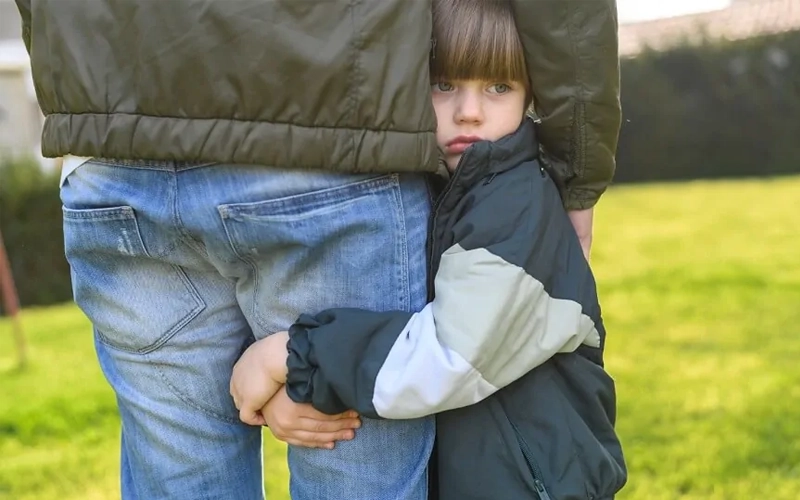
Bowlby Attachment Theory Stages and Phases
Understanding the stages of Bowlby’s attachment theory is the key to supporting children’s emotional development in any preschool setting. John Bowlby described attachment as a process that develops through predictable phases, each with its signs and needs. When educators and designers recognize these Bowlby attachment theory stages, they can create environments that truly support every child’s journey toward security and independence.
Overview of Bowlby’s Attachment Theory Stages
According to the Bowlby attachment theory chart, children don’t form attachments overnight. Instead, they move through a series of stages—each one building on the last. These phases are not just theoretical; they’re based on real observations of how infants and young children respond to caregivers in everyday life.
Let’s break down each phase and see how they show up in the classroom—and how the right preschool furniture and routines can support healthy attachment.
4 Stages of Bowlby’s Attachment Theory
The 4 stages of Bowlby’s attachment theory describe how attachment develops from birth through early childhood:
- Pre-Attachment Stage (Birth to 6 Weeks)
In this first phase, infants respond to caregivers, but they don’t yet show a clear preference for any one person. Babies will smile, make eye contact, and react to anyone who provides comfort.
In preschool and nursery environments, this means that even very young children benefit from gentle routines, soft lighting, and calm spaces. Furniture with smooth edges, soft surfaces, and accessible cribs or nap areas creates a foundation of comfort for infants who are beginning to experience group care.
As children grow, they start to recognize familiar faces, and their attachment behaviors change. - Indiscriminate Attachment Stage (6 Weeks to 6-8 Months)
During this phase, babies begin to distinguish between familiar and unfamiliar people. They may still accept comfort from many adults, but they start to show a preference for primary caregivers.
For preschools and infant rooms, the Bowlby attachment theory stages suggest the value of continuity—assigning key workers, using consistent daily greetings, and placing family photos in the classroom. Creating a familiar environment with cozy corners and personalized spaces helps build trust and predictability for every child.
As their connections deepen, children soon become even more selective about who they seek comfort and support from. - Discriminate Attachment Stage (6-8 Months to 18-24 Months)
Now, children form strong bonds with specific adults—usually parents or primary caregivers. This is when separation anxiety often appears: children may cry when left at school or resist being comforted by anyone else.
Preschools that understand the discriminate attachment phase plan ahead by setting up safe goodbye rituals, gentle separation transitions, and calm spaces for children to retreat to when upset. Teachers can use small group activities, comfort objects, and familiar routines to help children feel supported.
Eventually, as children’s confidence grows, their world expands to include new relationships. - Multiple Attachments Stage (After 18-24 Months)
Older toddlers and preschoolers begin to form attachments with numerous caregivers and peers. They seek support from teachers, friends, and sometimes even older children.
This is the phase when the design of the preschool classroom matters most. Furniture should support both group play and quiet individual time. Shared reading zones, collaborative activity tables, and flexible seating options help children learn cooperation and empathy, in line with Bowlby’s theory of attachment stages.
Understanding each of these stages isn’t just about child development—it’s about using the insights of the Bowlby attachment theory to make every preschool day a little safer, warmer, and more inviting.
Why Understanding Attachment Stages Matters for Preschools
When schools and suppliers know the stages of Bowlby’s attachment theory, they are better prepared to create environments that meet children where they are. It’s about more than just “supervising”—it’s about building spaces that respect the unique emotional needs at every age.
From the first crib to the group storytelling circle, every piece of furniture, every routine, and every teacher’s smile plays a role in helping children move through these attachment phases with confidence. This, in turn, lays the foundation for lifelong learning and healthy relationships.
Bowlby Attachment Theory Types and Styles
When discussing the Bowlby attachment theory types and the main styles of attachment, it’s important to remember that every child is unique, and so are the ways they connect with caregivers and teachers. John Bowlby’s original theory, later expanded by Mary Ainsworth, shows us that the quality of early attachment deeply affects how children behave and learn in preschool settings.
What Does Bowlby Say?
According to attachment theory, Bowlby’s definition, several main styles of attachment shape a child’s social and emotional growth. These include secure attachment, avoidant attachment, ambivalent (or resistant) attachment, and disorganized attachment. Each of these types, as described in the Bowlby attachment theory summary resources, comes with its own set of behaviors and learning needs.
Let’s take a closer look at each style, focusing on how these patterns show up in the classroom, and how preschool environment and furniture choices can either support or challenge a child’s development.
Secure Attachment (The Ideal Bowlby Attachment Theory Style)
Secure attachment is what every parent and teacher hopes for. Children with secure attachment are comfortable exploring, can manage brief separations, and trust adults to meet their needs. According to the secure attachment theory, Bowlby’s model, these children are usually more confident in group play and learn easily from others.
In the preschool environment, Bowlby’s attachment theory in early childhood education suggests that cozy, welcoming spaces and familiar routines encourage this style. Soft reading corners, personalized cubbies, and accessible classroom materials all help children feel at home, supporting secure attachment theory, Bowlby.
Avoidant Attachment (Independence or Defense?)
Children with avoidant attachment often appear very independent, sometimes even withdrawn. This style develops when caregivers are emotionally distant or unresponsive. According to the Bowlby attachment theory types, these children may prefer to play alone, rarely seek comfort, and can appear indifferent during drop-off or pick-up.
In preschool settings, understanding the avoidant attachment theory of Bowlby is crucial. Spaces that provide gentle encouragement for group play, paired with personal “safe spots” (like individual mats or small nooks), can help avoidant children slowly build trust. Teachers and furniture suppliers can work together to create areas where children can join group activities at their own pace, without pressure.
Ambivalent (Resistant) Attachment (Clingy and Anxious)
Ambivalent attachment, sometimes called resistant attachment, is another style Bowlby described. Children with this style may seem “clingy,” have trouble calming down after being upset, and struggle to explore new activities. As detailed in Bowlby’s attachment theory stages and research by Ainsworth, this style often results from inconsistent caregiving.
To support these children, preschool teachers can set up clear routines and provide transition aids (like visual schedules or comfort objects). Calm-down corners, soft furniture, and dedicated retreat spaces are essential. Ambivalent attachment theory, Bowlby shows us the value of predictability and reassurance in both classroom routines and the environment.
Disorganized Attachment (Confused Responses to Stress)
Children with disorganized attachment show a mix of behaviors—sometimes approaching caregivers, other times withdrawing or freezing. This is the rarest and most challenging style, often linked to inconsistent or frightening caregiving experiences.
For schools, understanding Bowlby’s disorganized attachment theory is essential for identifying children who may need extra support. Calm, predictable environments, clear visual cues, and easily accessible adult help points are all part of the solution. Furniture design can include soft, quiet zones, clear boundaries between group and solo spaces, and “break spaces” where children can regain control.
Knowing these Bowlby attachment theory types and styles allows educators, school leaders, and furniture suppliers to make smarter choices in preschool layout and product selection. Bowlby
Difference Between Bowlby and Ainsworth Attachment Theory
While John Bowlby’s attachment theory introduced the idea of attachment as an evolutionary, biologically based system, Mary Ainsworth and Bowlby’s attachment theory collaboration brought the concept of attachment styles into practice. Ainsworth’s “Strange Situation” experiments helped define the four types of attachment by observing how children responded to short separations and reunions.
The difference between Bowlby and Ainsworth attachment theory is clear: Bowlby explained why attachment matters and how it develops; Ainsworth showed us how to recognize and support different attachment styles in real classrooms. For preschool design and furniture suppliers, both perspectives are essential for creating child-centered spaces that address every child’s emotional needs.

Factors That Influence Attachment and Theories in Practice
Children’s attachment is shaped by a wide range of factors, from home life and caregiver interactions to the design of preschool spaces and the furniture children use every day. Understanding these factors—and knowing how to address them—is at the heart of effective early childhood education.
Key Factors Affecting Attachment Formation
Attachment doesn’t develop in isolation. According to Bowlby’s attachment theory and related research, the main factors influencing attachment in early childhood include:
- Caregiver Consistency: Stable, responsive teachers and parents help children feel safe.
- Physical Environment: Welcoming, predictable classrooms and safe furniture support emotional security.
- Routine and Predictability: Daily schedules and clear transitions reduce anxiety.
- Family Involvement: Active parent-school communication and visible home elements (like family photos) strengthen bonds.
- Cultural and Social Context: Community values and expectations can shape how attachment behaviors are supported.
- Child’s Temperament: Each child responds differently to change and new situations.
These factors affecting Bowlby’s attachment theory help explain why some children adapt easily to new preschool settings, while others may need extra support.
Recognizing these diverse influences, early childhood educators turn to theory for guidance on how to respond. This is where Bowlby and Ainsworth’s combined insights become essential.
How Bowlby and Ainsworth Work Together
John Bowlby focused on the emotional roots and developmental stages of attachment, showing us why secure bonds are essential for children’s healthy growth and learning. His insights shape classroom routines, the layout of preschool spaces, and even the way teachers greet children each morning.
Mary Ainsworth, building on Bowlby’s theory, gave educators the practical tools to observe Và respond to children’s attachment behaviors in everyday situations. Her “Strange Situation” study provided a clear framework for identifying when children need more comfort or support during times of stress or transition.
This partnership—often called the attachment theory by Bowlby and Ainsworth—offers a complete toolkit: Bowlby’s emotional foundations and stages, plus Ainsworth’s practical observation and support strategies.
With both theorists’ insights, early childhood professionals and preschool suppliers can move seamlessly from theory to practice, creating supportive environments where every child is seen, understood, and helped to thrive.
From Theory to Classroom Practice
For example, imagine a child struggling with separation anxiety at drop-off. Using Bowlby’s ideas, the teacher knows the importance of predictable routines and “safe base” spaces. Thanks to Ainsworth’s approach, the teacher carefully observes the child’s responses and adapts: offering a comfort object, creating a special goodbye ritual, or gradually lengthening the time away from parents.
Daily classroom routines, welcoming corners, calm-down spaces, and strong home-school communication all reflect this joint approach. Teachers may use personalized greetings, consistent schedules, and clear visual cues—all practical strategies rooted in Bowlby and Ainsworth’s attachment theory.
By combining Bowlby’s and Ainsworth’s perspectives, preschools and their suppliers create environments where attachment theory is not just an idea, but a lived reality for every child.
With this solid theoretical and practical foundation, we’re now ready to explore how Bowlby’s attachment theory is fully brought to life in early childhood education settings, down to the details of space design, furniture choice, and daily routines.
| Aspect / Focus Area | Bowlby’s Attachment Theory | Ainsworth’s Attachment Theory | Practical Classroom Example |
|---|---|---|---|
| Main Contribution | Explained why attachment is crucial; outlined stages and emotional needs | Developed how to observe and categorize attachment styles | Both theories guide the environment & daily routines |
| Key Focus | Stages of attachment, secure base, emotional security | Observation, Strange Situation, attachment types (secure, avoidant, ambivalent, disorganized) | Teachers identify and respond to each child’s attachment needs |
| Practical Application | Shapes routines, space layout, adult consistency | Helps teachers notice signs of stress or security | Consistent greetings, calm-down corners, family communication |
| Difference between Bowlby and Ainsworth | Focused on underlying needs & stages | Focused on observable behaviors & styles | Combined for full-circle support |
With this knowledge, early childhood professionals and preschool suppliers can turn theory into practice, designing environments, routines, and furniture that help every child build secure and positive attachments.
Bowlby Attachment Theory in Early Childhood Education
Applying the Bowlby attachment theory in preschool and kindergarten environments is not just a trend—it’s a science-backed, child-centered strategy that supports healthy development, emotional security, and lifelong learning. For every school leader, teacher, or supplier, the actual value lies in turning theory into daily routines, space design, and product choices.
Creating a Secure Base—Preschool Space Planning and Emotional Zones
Applying Bowlby attachment theory in a preschool setting starts long before the first child walks in each morning. The “secure base” concept, a core idea in John Bowlby’s attachment theory, means every space and object in the classroom should help children feel safe, confident, and ready to explore.
Key Space Planning Principles
A well-designed preschool space is more than just colorful walls or bright posters. According to the Bowlby attachment theory in early childhood education, a secure base classroom environment includes:
- Clear Sight Lines: Children should always be able to see familiar adults, whether they are building in the block area or reading quietly. Use low shelves, child-height partitions, and glass panels to keep teachers visible at all times.
- Defined Emotional Zones: Every classroom benefits from designated spaces for group activities, independent play, relaxation, and private retreat. For example:
- Welcome Zone near the entrance, with soft benches and personalized cubbies, where children can store belongings and greet caregivers. This supports smooth daily transitions—a critical moment for attachment.
- Calm-Down/Cozy Corner with soft seating, sensory objects, and soothing colors, allowing children to self-regulate during emotional moments or after separations.
- Group Circle Area with modular mats or carpet tiles where children gather for stories or class meetings, building community and routine.
- Flexible Play Spaces where furniture can be easily moved or reconfigured for different activities, helping both shy and outgoing children find their comfort level.
Personalization Builds Security
Personalization is at the heart of Bowlby’s attachment theory in practice. According to attachment theory and personalization research, when children see their own identity reflected in their classroom, it boosts their sense of belonging and emotional security. This, in turn, supports secure attachment in preschool settings.
Practical Ways to Personalize the Preschool Environment:
- Named Cubbies or Lockers: Give each child a storage space labeled with their name and photo. This simple product not only keeps belongings organized, but also sends a clear message: “You are welcome here, and you matter.”
- Family Photo Displays: Dedicate a wall, shelf, or digital photo frame to pictures of each child’s family. These images help children feel connected to home, especially during moments of anxiety or transition. According to Bowlby’s attachment theory, familiar faces and routines lower stress and help with separation adjustment.
- Individual Artwork and Projects: Hang children’s drawings, crafts, and stories at their eye level, using clips, bulletin boards, or display rails. This celebrates their achievements and gives every child a visible stake in the environment.
- Welcome Messages and Rituals: Use welcome boards or daily greeting rituals where each child’s name is acknowledged. Even a simple “Welcome, Lucy!” sign by the door can set a positive tone for the day.
Furniture and Product Solutions for Personalization:
- Customizable cubby units: Modular cubbies or lockers can be ordered with nameplates, colored doors, or spaces for children’s photos.
- Magnetic or pinboard walls: Allow easy rotation of artwork, family pictures, and class achievements.
- Personal comfort baskets: Small baskets or fabric bins at each child’s seat can hold comfort objects (like a favorite book or small toy), further grounding the child during transitions.
Attachment Theory Personalization in Action
Imagine a child who is shy and anxious about starting school. On the first day, they see their name and family photo on their cubby, recognize their artwork on the classroom wall, and join a welcome ritual with their teacher and peers. These personal touches, rooted in Bowlby’s attachment theory in preschool design, make the difference between feeling like an outsider and feeling at home.
Personalization is not just an “extra”—it’s a strategic, theory-based approach to building secure attachment in the classroom and supporting children’s confidence and well-being.
The Role of Routine in the Physical Environment
One of the most potent insights of Bowlby’s attachment theory is that children thrive in predictable, consistent environments. In the preschool setting, this means daily routines should be visibly embedded into the physical space, helping children know what to expect and when.
Why Routine Matters for Secure Attachment
According to attachment theory, routine research, predictable schedules, and familiar surroundings reduce anxiety, support self-regulation, and foster secure bonds between children and caregivers. When a child can anticipate the flow of the day, transitions (like saying goodbye to parents, starting group time, or moving to lunch) become less stressful.
How to Embed Routine in the Preschool Environment
- Visual Schedules: Use wall charts, flip boards, or picture timelines to display each part of the day (arrival, group time, snack, outdoor play, rest, pickup). Even non-readers benefit from visual cues showing “what comes next.”
- Consistent Furniture Arrangement: Keep key furniture pieces—like reading corners, snack tables, and nap mats—in fixed locations so children always know where to go.
- Color-coded Zones: Use colored rugs, mats, or signage to mark different activity areas (blue for reading, green for play, yellow for snacks). This spatial clarity reassures children and speeds up transitions.
- Transition Objects: Provide baskets or bins at entryways with comfort items for children who may feel anxious at drop-off, allowing them to carry a familiar toy or blanket as they move through the day.
Product Solutions Supporting Routine:
- Daily routine display boards: Magnetic, dry-erase, or Velcro boards that allow teachers to move routine cards and let children participate in tracking the day’s schedule.
- Modular dividers and signage: Flexible, easy-to-move classroom dividers can help set up and reset zones for different times of day.
- Personal storage for routines: Individual cubbies or baskets for each child’s belongings ensure smooth transitions and reinforce the sense of routine.
Routine in Action: Practical Scenario
Picture a preschool morning: As children arrive, they place their coats in their own cubby, find their photo on the “Today’s Helpers” board, and check the visual schedule with their teacher. Every step is familiar. When it’s time to transition to circle time or snack, children already know where to go and what comes next, reducing chaos and building trust.
Bowlby attachment theory in classroom routines is not just about what you do, but how the environment and products support those routines, making every day safer, calmer, and more welcoming for every child.
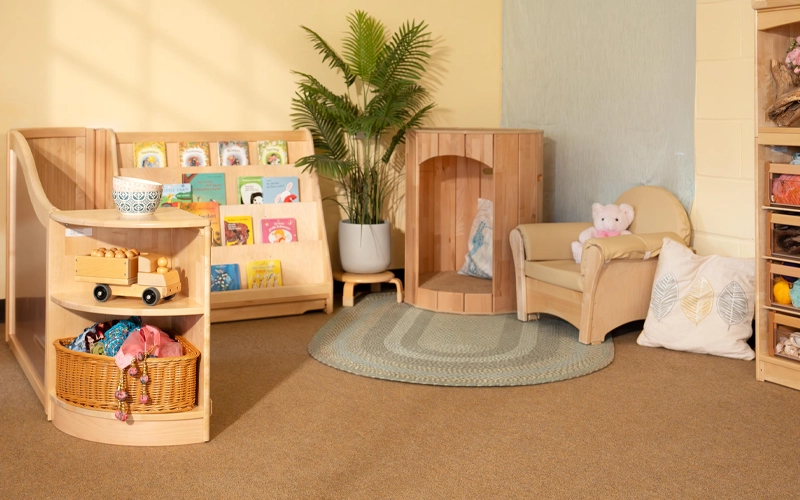
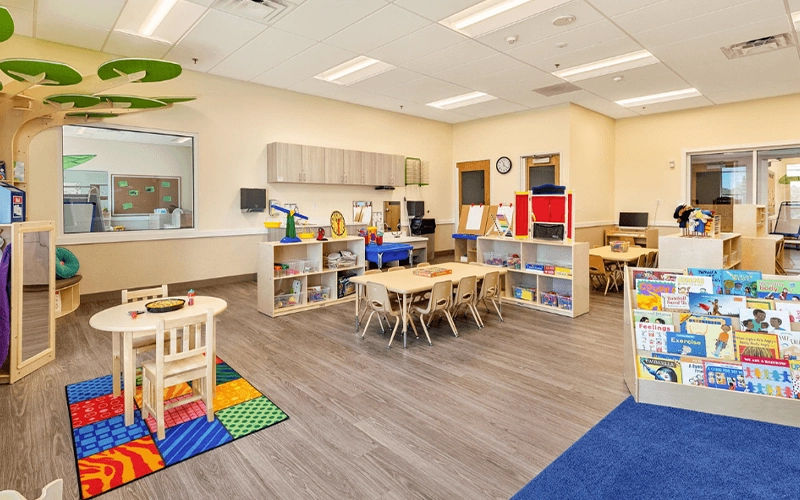
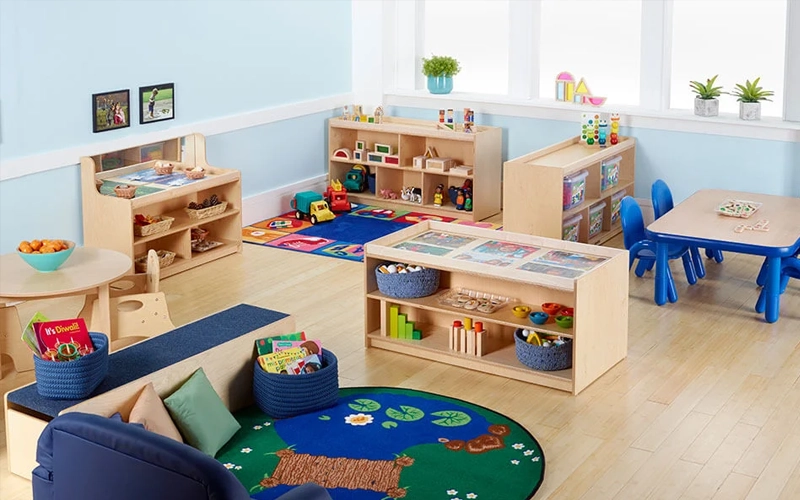
Furniture Choices that Support Attachment
Lựa chọn đúng đắn đồ nội thất mầm non is about much more than aesthetics or convenience. According to Bowlby’s attachment theory in early childhood education, the materials, shapes, arrangement, and flexibility of classroom furniture have a direct impact on a child’s emotional security, independence, and ability to form healthy attachments.
Soft Seating and Cozy Retreats: Building Comfort Zones
Attachment theory shows that children need spaces where they can relax, calm down, or seek comfort, especially during moments of separation, transition, or sensory overload.
- Create “calm-down corners” using soft sofas, beanbags, or cushioned reading nooks in quiet zones.
- Add sensory-friendly touches such as plush rugs, dimmable lights, and gentle wall colors.
- Offer private tents, teepees, or small alcoves for children who need extra retreat space, helping both anxious and independent children manage big feelings.
Choose soft, rounded-edge furniture with easy-to-clean fabrics. Movable, modular seating lets you adapt the space as group dynamics change.

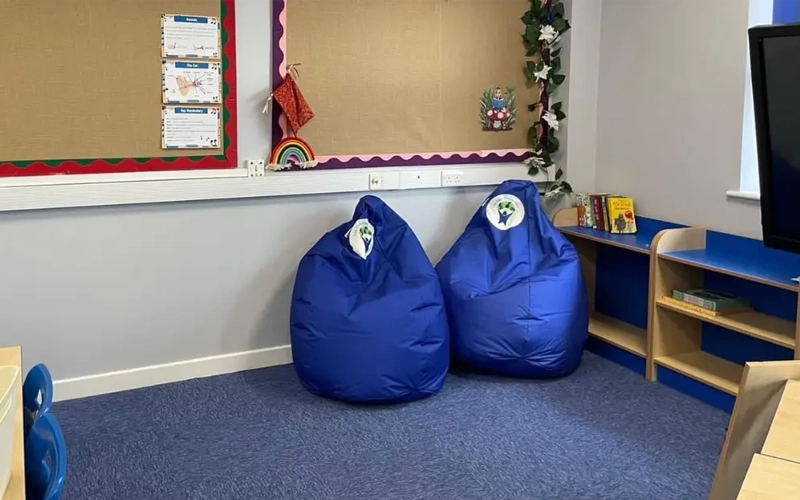

Flexible Group Seating and Modular Tables
Preschool is where children learn to cooperate, share, and interact. According to the Bowlby attachment theory, environments that support both group and solo activity help children balance independence with social connection.
- Use modular tables that can be joined or separated, so spaces flex from group projects to individual play.
- Provide a mix of group seating (benches, round tables) and smaller, single chairs so children can choose their comfort level.
Invest in adjustable-height tables, stackable stools, and easy-move furniture on wheels. These allow the classroom to grow with children’s changing needs, supporting both “secure base” group time and moments when a child prefers space.
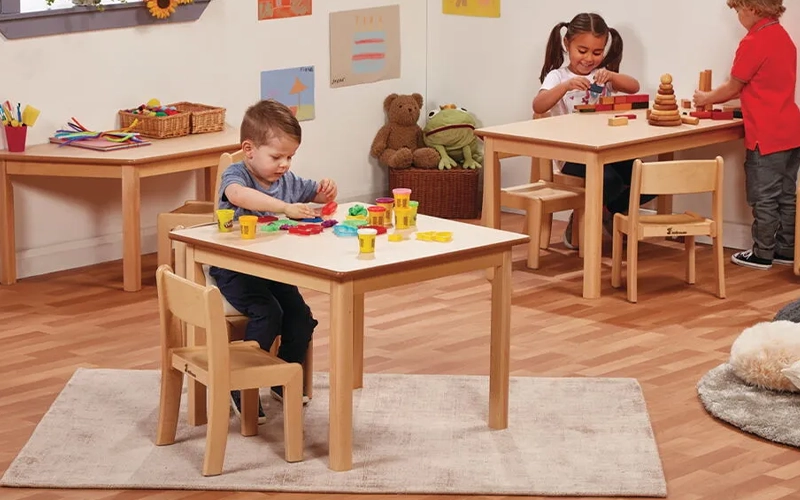
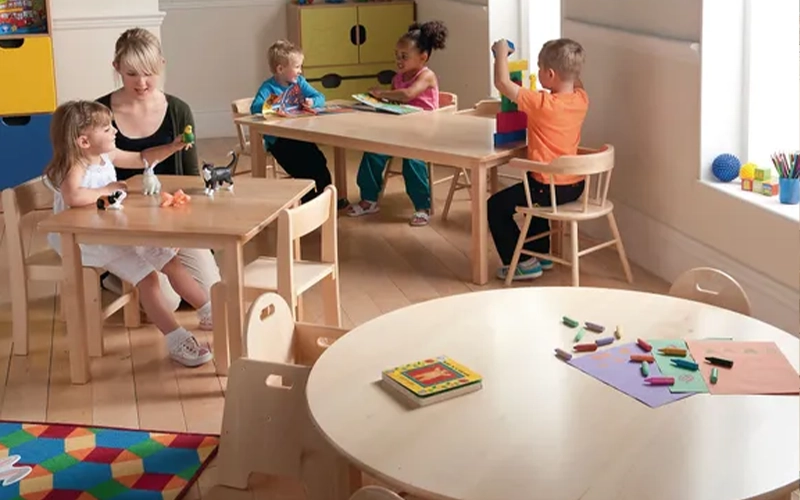
Personal Storage: Supporting Ownership and Routine
Attachment theory emphasizes the importance of personalization and routine. Well-designed furniture can help children feel at home and in control.
- Give each child their cubby, locker, or shelf, clearly labeled and easy to reach.
- Use transparent or open storage so children can see and access their belongings, reducing anxiety and building independence.
Choose modular cubby systems that allow for photos, artwork, and special messages from home, deepening the home-school bond and giving each child a personal “anchor” in the classroom.
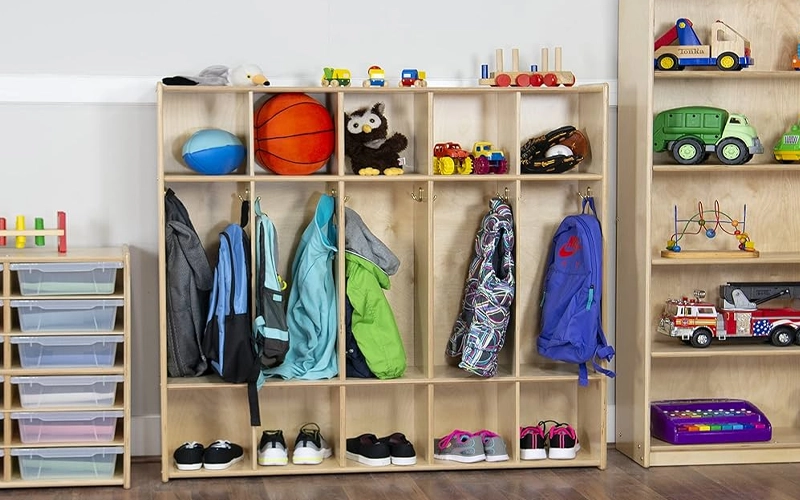
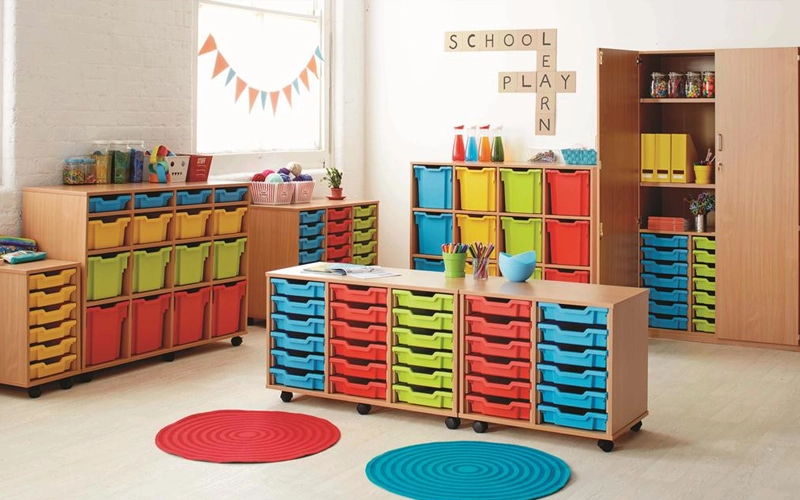
Transition Stations and Entry/Exit Zones
Transitions are moments of emotional vulnerability. According to Bowlby’s attachment theory, spaces where parents and children can say goodbye slowly, or reunite at the end of the day, are essential.
- Place benches or parent-child seating at the entrance, so arrivals and departures can be gentle, unrushed, and connected.
- Add message boards or digital screens where teachers can share highlights and news, keeping families informed and involved.
Install multi-use benches with storage, low shelving for shoes and bags, and cheerful signs or welcome mats to make entry and exit feel special.
With thoughtful furniture and environment planning, preschool classrooms become living examples of Bowlby attachment theory in action—spaces where every child is free to build secure relationships, explore confidently, and truly thrive.
Lớp học lý tưởng của bạn chỉ cách bạn một cú nhấp chuột!
Teacher-Child Interactions and Daily Routines
Even the most thoughtfully designed preschool environment depends on strong, responsive teacher-child relationships to bring the Bowlby attachment theory to life. Secure attachment grows in classrooms where adults are consistently warm, predictable, and attentive—qualities that are supported, not replaced, by good furniture and routines.
Warm Greetings and Predictable Rituals
Attachment theory research shows that daily greetings and rituals create a sense of belonging and trust. When teachers welcome every child by name, with a smile or a special handshake, it lays the emotional foundation for the whole day.
- Set up a welcome board or morning message by the door.
- Use arrival routines—like putting up a name card or choosing a “job for the day”—to give children ownership and predictability.
- Have a brief, familiar circle time at the same spot each morning to anchor the group.
Emotional Support Throughout the Day
Children’s needs can shift minute by minute. According to Bowlby’s attachment theory in the classroom, secure attachment is reinforced when teachers respond quickly and gently to a child’s signals, whether that means offering a hug, guiding a child to a calm-down area, or helping with words during conflict.
- Keep calm-down corners or comfort objects accessible so that children can self-regulate with or without adult help.
- Train staff to recognize the signs of separation anxiety, fatigue, or sensory overload, and have flexible routines to help children recover.
Responsive Routines and Flexible Schedules
Young children thrive on routine, but Bowlby’s attachment theory reminds us that flexibility is just as necessary. If a child needs extra time to say goodbye or isn’t ready for group activity, teachers should have the freedom to adjust without stress.
- Build “buffer time” into the schedule for transitions, so children don’t feel rushed.
- Allow for free choice time, where children select activities and partners, giving them control within a predictable structure.
- Display visual schedules and use countdowns for transitions, so children always know what comes next.
Individual Attention and Connection
Attachment theory emphasizes the need for every child to feel “seen” by a caring adult. This is easier in environments where the teacher-child ratio is manageable, and the classroom design encourages small group or one-on-one moments.
- Use flexible seating and small tables to encourage intimate groupings.
- Have reading nooks or shared tasks (watering plants, feeding classroom pets) where children and teachers can connect outside of large group times.
- Take time to celebrate each child’s progress and comfort them when upset—these “micro-interactions” build lasting trust.
When teacher interactions, routines, and classroom spaces are aligned with Bowlby attachment theory, the result is a learning environment where every child feels secure, valued, and ready to explore the world.
Family Engagement and Home-School Connection
According to the Bowlby attachment theory, secure attachment develops not only at school but also through strong, positive connections between home and preschool. When families and educators work together, children experience a unified sense of security, routine, and belonging—even during the most stressful transitions.
Welcoming Family Spaces and Visible Connections
- Family Photo Walls: Set up a gallery or display board featuring family photos for each child. This helps children feel close to loved ones, supports smoother drop-offs, and comforts children during emotional moments. MỘTccording to Bowlby’s attachment theory in early childhood, seeing familiar faces at school reduces separation anxiety and increases trust in the environment.
- Parent-Child Entry Zones: Create cozy welcome areas with benches, books, or shared activities, allowing parents and children to have a gentle, unhurried start or end to the day. These “buffer spaces” allow for meaningful goodbyes and reunions, supporting the transition from home to school and back again.
- Personalized Family Messages: Use message boards, mailboxes, or digital screens for parents to leave notes, updates, or daily encouragement for their children. This personal touch reinforces the child’s sense of being cared for by both family and teachers.
Active Family Participation in Classroom Life
- Open Communication Channels: Encourage families to participate in daily life with home-school journals, regular feedback, and digital platforms for updates and sharing moments from both settings.
- Family Days and Shared Events: Organize family breakfasts, reading mornings, or “bring a family member” events, letting children showcase their space and routine, building pride and confidence.
- Home-to-School Transitions: Help families establish goodbye rituals, like reading a special book together each morning or sharing a family “good luck” object for the day.
How Furniture and Environment Support Family Engagement
- Customizable Entry Benches and Lockers: Modular, easy-to-label lockers and soft benches make arrivals and departures welcoming, organized, and stress-free.
- Visible Information Centers: Use dedicated display spaces for family news, children’s achievements, and parent resources to foster a true community feeling.
- Flexible Meeting Areas: Set up small tables or soft seating where teachers and families can talk privately about a child’s needs or progress.
A strong home-school connection turns the preschool into an extension of the child’s family, creating emotional continuity, boosting confidence, and reinforcing the secure base at the heart of Bowlby’s attachment theory.
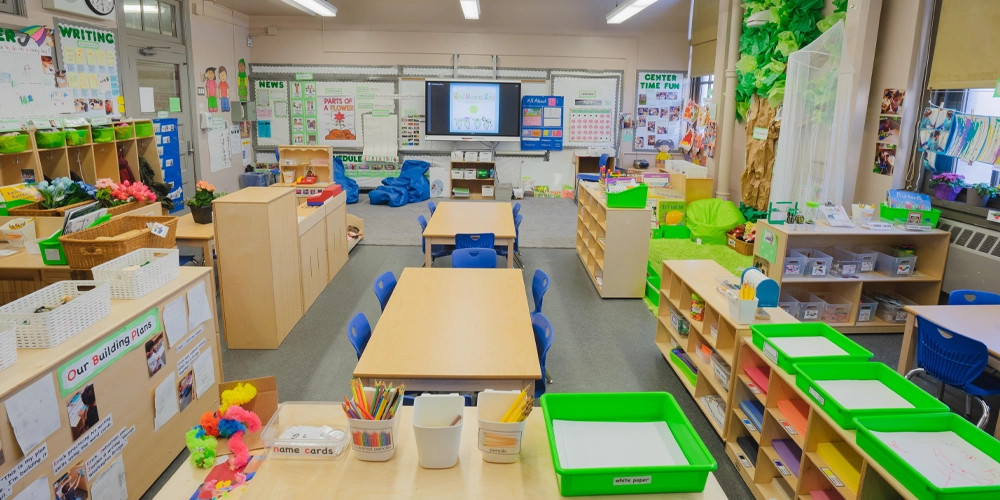
The Lasting Impact of Early Attachment & Common Issues
The benefits of applying Bowlby’s attachment theory in early childhood education go far beyond the preschool years. Secure attachment, built on strong relationships and supportive environments, is a foundation for lifelong learning, emotional stability, and healthy social behavior.
Long-Term Benefits of Secure Attachment
- Greater Confidence and Independence: Children who develop secure attachments in early years are more likely to explore their world, take appropriate risks, and adapt to new situations with ease.
- Better Social Skills: Positive early attachments support empathy, cooperation, and conflict resolution, making children more resilient in group settings and future school transitions.
- Stronger Academic Performance: Research linked to Bowlby attachment theory consistently shows that emotionally secure children have higher attention spans, stronger language skills, and greater curiosity for learning.
- Emotional Well-Being: Securely attached children tend to manage stress, frustration, and disappointment more effectively throughout childhood and adolescence.
Common Issues and How to Address Them
Even with the best intentions, preschools can face challenges in implementing attachment theory. Here are some common problems and solutions:
- Inconsistent Routines or Staff Changes:
Frequent teacher turnover or unpredictable schedules can undermine attachment. Solution: Create clear routines, use daily visual schedules, and ensure smooth staff transitions with co-teaching or gradual introductions. - Overcrowded or Overstimulating Spaces:
Noisy, cluttered environments make it hard for children to feel secure. Solution: Use soft dividers, quiet corners, and clutter-free storage to create calm, defined spaces. - Lack of Personalization:
Uniform spaces without children’s names, photos, or artwork fail to build belonging. Solution: Make room for individual cubbies, personalized displays, and child-chosen decorations.
Optimizing the Environment: Practical Tips
- Regularly review classroom layouts to keep sight lines open and spaces flexible as class sizes and needs change.
- Invest in high-quality, adaptable furniture that can be reconfigured for group, solo, and quiet activities.
- Keep strong communication channels with families to ensure children’s emotional needs are being met both at home and in school.
Bowlby Attachment Theory in Professional Practice
For preschool owners and furniture suppliers, understanding and applying Bowlby attachment theory is more than a marketing point—it’s a way to stand out for quality, child-centered design, and commitment to children’s lifelong success.
Promoting these ideas in your space planning, product offerings, and parent communications positions your brand as a true leader in early childhood education.
Phần kết luận
The principles of Bowlby’s attachment theory remind us that every detail of a preschool environment—from classroom layout to daily routines and even the smallest piece of furniture—shapes a child’s sense of security, belonging, and readiness to learn. By understanding and applying these insights, early childhood educators, school leaders, and furniture suppliers can create truly child-centered spaces that nurture both emotional and academic growth.
Investing in secure attachments is not just about following a theory; it’s about giving every child the strong foundation they need for lifelong success. Whether you are designing a new preschool, upgrading classroom furniture, or looking to support families through daily transitions, making Bowlby attachment theory the heart of your strategy will set you apart as a leader in early childhood education.
With thoughtful planning, the right products, and a commitment to children’s emotional well-being, we can all help the next generation feel safe, valued, and inspired to explore their world.
Further Reading:
To understand how Bowlby’s attachment theory works alongside other educational theories, don’t miss our in-depth articles on:
Piaget’s cognitive stages
Vygotsky’s sociocultural approach
Phương pháp Montessori
Erikson’s psychosocial stages
The Reggio Emilia method
Câu hỏi thường gặp
1. What is Bowlby’s attachment theory?
Bowlby’s attachment theory is a framework developed by John Bowlby that explains how strong emotional bonds between children and caregivers form the foundation for healthy emotional and social development. Secure attachment helps children feel safe, confident, and ready to explore the world.
2. How to explain Bowlby’s attachment theory in a sentence?
Bowlby’s attachment theory states that children need close, loving relationships with caregivers to develop trust, security, and lifelong well-being.
3. What does John Bowlby say about attachment theory?
John Bowlby believed that attachment is a biological need for children, not just a learned behavior. He emphasized that early emotional bonds shape personality, mental health, and the ability to form relationships throughout life.
4. What is the primary focus of Bowlby’s attachment theory?
The primary focus of Bowlby’s attachment theory is understanding how secure relationships with caregivers support children’s emotional security, confidence, and ability to handle stress and new experiences.
5. Why is attachment necessary?
Attachment is essential because it forms the basis for a child’s sense of safety and belonging. Securely attached children are better at managing emotions, building friendships, and learning new skills, both in preschool and later in life.
6. What is the role of attachment in development?
Attachment plays a key role in every area of development—emotional, social, and even cognitive. Children with strong, secure attachments are more likely to explore, try new things, and develop the resilience needed for lifelong success.

